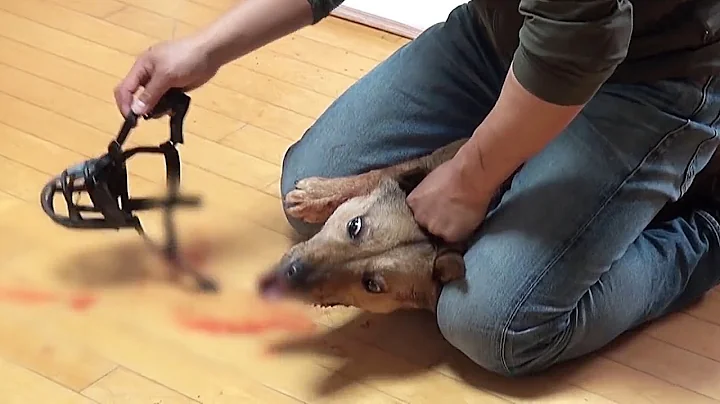

由于蛾类并不喜欢暴风雨,当暴雨来临时它们就会寻找庇护所。通常,他们会躲在树叶或树枝下,或藏在缝隙中,直到雨停。它们将翅膀折叠在一起,等待雨过天晴。
Since moths are not the biggest fans of a stormy afternoon, they will look for shelter when the downpour starts. Typically, they will take cover under leaves or branches or hide in cracks until the rain passes. They fold their wings together and wait until the rain is gone.
现在,科学家正在研究不断变化的天气模式和很多昆虫行为(包括一些种类的飞蛾)之间的确切关系。目前他们掌握的信息还没有定论,但这些研究确实暗示了这二者之间存在着潜在的关联,或许表明了蛾类能够感知天气的变化。
Now, scientists are researching the exact relation between changing weather patterns and the behaviors of many insects, including some species of moths. The information they have now is not conclusive. But the research does hint at a potential correlation between the two, which may indicate that moths can sense changes in the weather.


绝大多数蛾类在其整个生长阶段都不会游泳,但当它们碰到任何水体时,并不会立刻就淹死。它们的确拥有一些特性—— 比如它们的身体和翅膀上有毛—— 有助于它们在一定程度上排斥水分。因此,它们可以在水中漂浮和移动。
这一点对蛾类帮助很大。因为当它们发现自己可能要淹死时,就可以爬到陆地上去。
The vast majority of moth species are incapable of swimming through all of their stages of development. But they will not drown instantly when they hit any body of water. They do possess some attributes that help to repel water to an extent such as the hairs on their wings and body. So, they can float around and move in the water.
This is helpful as they can climb up to dry land should they find themselves facing a watery grave.
蛾类不能从水中起飞,需要到达陆地才能起飞。
Moths can’t start in the water and need to reach dry land to fly.
然而,上述水生蛾类的进化方式与陆生蛾类不同。这些种类的飞蛾要么一生都生活在水下,要么在它们生命周期的重要阶段生活在水下。
However, the aforementioned aquatic moths have evolved differently than their terrestrial counterparts. These species of moths can live either their entire life or a significant part of their life cycle underwater.
卵孵化后,幼虫用茧将自己包裹起来,粘在岩石或木头等坚固的结构上;待完全成熟后,成虫会借助翅膀和腿游出水面;然后,它们会前往陆地上寻找合适的伴侣,之后,它们又潜回水中产卵,完成生命的循环。
After the eggs hatch, the larvae cover themselves with a cocoon and then stick to a solid structure like a rock or log. After reaching full maturity, the adult moth will swim out of the water with the help of its wings and legs. They then head out for dry land and to find a suitable mate. Afterward, they dive back into the water to lay eggs and complete the cycle.


飞蛾不防水,不过它们拥有某些特性,可以帮助它们排斥水和湿气。在一些物种中,即水生蛾类,它们有一种捕获气泡的方法,以帮助它们在水下生存。
Moths are not waterproof but they have certain traits that help them to repel water and moisture. And in some species, namely the aquatic moths, they have a way of trapping air bubbles to help them survive underwater.
它们身上的细毛可以防止水分子粘在皮肤上,因此给人一种飞蛾能防水的错觉。不过,如果你将大多数种类的飞蛾长时间地浸入任何一种液体中,最终它们会屈服并死亡。
The tiny hair on their body prevents the water molecules to stick to their skin. Thus, giving the illusion that the moth is waterproof. But if you were to submerge most species of moths in any liquid for a long period, they will eventually succumb and die.
在这种情况下,水生蛾类拥有一种独特的优势,它们可以借助其体毛形成气膜,气膜基本上就是气泡,能够在隔绝空气的情况下传送氧气。因此,它们能够呼吸,而不会淹死。
这与鱼通过鳃呼吸的方式不同,鱼允许水进入身体,之后氧气才会被转移。
Aquatic moths have a unique advantage in this instance. They can form plastrons with the help of their body hair. Plastrons are basically air bubbles that help to diffuse oxygen without the water getting inside. So, the moths are able to breathe without drowning.
This is different from how fishes breathe through their gills, as they allow the water to get inside their body, and then the oxygen is transferred.
英文链接:https://pestabc.com/moths-water-rain/





















